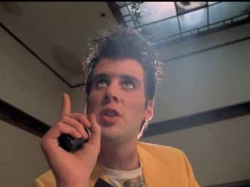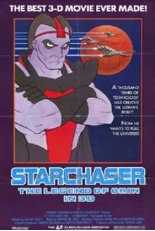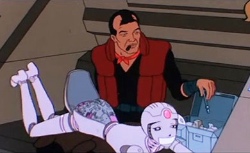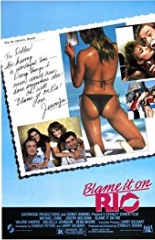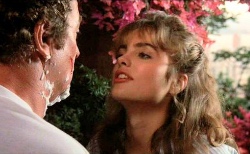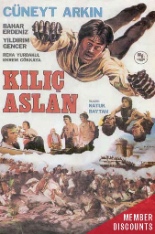
 Cüneyt Arkın, one of the proud futuristic freedom fighters from Dünyayı Kurtaran Adam — also known in the States, rather dumbed-down if you ask me, as Turkish Star Wars — is back on the small screen in a rather good-looking print of 1975’s Kiliç Aslan or, for the sake of argument here, The Sword and the Claw.
Cüneyt Arkın, one of the proud futuristic freedom fighters from Dünyayı Kurtaran Adam — also known in the States, rather dumbed-down if you ask me, as Turkish Star Wars — is back on the small screen in a rather good-looking print of 1975’s Kiliç Aslan or, for the sake of argument here, The Sword and the Claw.
In this bargain-basement flick, a king with a birthmark of a lion on his back is killed by his sleazy mustachioed rival. When his concubine, pregnant and on the run, has his baby in the woods, said child is kidnapped and raised by lions, mostly done through a quick vignette of a small child feeding an equally immature lion some raw meat, which couldn’t have been safe, but the kid and the lion look like they’re having fun.
As the child grows up into strapping vine-swinging man Arkin, he immediately runs afoul of the same corrupt leader and, for his troubles, has his hands burnt black, Cajun-style. Thankfully, an old man forges a pair of new unwieldy metal hands — lion’s claws, if you will — and, in the last 10 minutes of film, rips out the throats of the supreme leader’s army and, of course, the big boss. Roll credits.
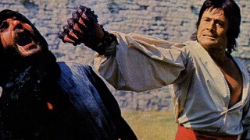 That seems simple enough, right?
That seems simple enough, right?
A prime example of the popular Turkish costume dramas of the time, The Sword and the Claw has choppy editing, uneven music and the worst dubbing in history, but damned if it isn’t an entertaining flick, with Arkin jumping off the screen, somersaulting into every fight scene, with particular abandon being given to the bloody finale and his angry lion-face.
If memory serves me, I vaguely remember the VHS box for this movie when it was called Lionman, always overlooked and gathering dust. Still, the American Genre Film Archive’s Blu-ray — from the only 35mm print in existence, natch — is the nicest I’ve even seen of a Turkish film of this ilk, a genre usually reserved for 10th-generation burns.
As a bonus feature, the AGFA disc includes the kung-fu foible Brawl Busters starring Black Jack Chan, produced by the “Official Chinese Black Belt Society.” Yep, that sounds totally legit. —Louis Fowler


 Not to be confused with
Not to be confused with 